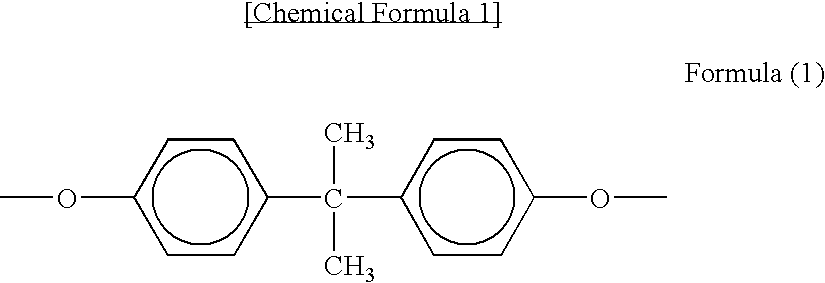Resin microparticle as raw material for toner, aqueous dispersed system thereof and toner
a technology of toner and resin microparticles, applied in the field of resin microparticles as raw materials for toner, aqueous dispersed systems thereof, can solve the problems of deterioration of image quality, high energy requirements in some cases, and easy contamination of toner carriers, etc., and achieve excellent image quality.
- Summary
- Abstract
- Description
- Claims
- Application Information
AI Technical Summary
Benefits of technology
Problems solved by technology
Method used
Image
Examples
example 1
[0236] 91 mass parts of the resin (A-2-1), 5 mass parts of a carbon black REGAL330R (a product of Cabot Specialty Chemicals, Inc.), 3 mass parts of refined carnauba wax 1 powder (a product of Nippon Wax Co., Ltd.) and 1 mass part of a charge controlling agent BONTRON S-34 (a product of Orient Chemical Industries, Ltd.) were dispersed and mixed using a Henschel mixer. The resulting material was fed into a twin screw extruder PCM30-41.5 (a product of Ikegai Corporation) at 3.6 kg / hr and melt-kneaded at 140° C., and distilled water was continuously fed from a feeding port placed at a vent section of the extruder at 960 g / hr to obtain an aqueous dispersed system comprising a microparticle dispersed in water. An average particle diameter of 50% volume (D50) of the obtained microparticle was 0.29 μm.
[0237] The solid content ratio of the aqueous dispersed system was adjusted to be 20 mass %. 300 g of the aqueous dispersed system and 400 g of 2 weight % sodium chloride aqueous solution wer...
example 2
[0238] A toner was obtained in the same manner as in Example 1, except that the resin (A-2-2) was used as a raw material and the concentration of the sodium chloride aqueous solution was changed to 1.5 mass %. The evaluation results are shown in Table 9.
example 3
[0239] A toner was obtained in the same manner as in Example 1, except that 64 mass parts of the resin (A-2-3) was used as a raw material and 27 mass parts of WR-901 (a product of Nippon Synthetic Chemical Industry Co., Ltd.) was used as a emulsifying auxiliary. The evaluation results are shown in Table 9.
PUM
| Property | Measurement | Unit |
|---|---|---|
| particle diameter | aaaaa | aaaaa |
| particle diameter | aaaaa | aaaaa |
| temperature | aaaaa | aaaaa |
Abstract
Description
Claims
Application Information
 Login to View More
Login to View More - R&D
- Intellectual Property
- Life Sciences
- Materials
- Tech Scout
- Unparalleled Data Quality
- Higher Quality Content
- 60% Fewer Hallucinations
Browse by: Latest US Patents, China's latest patents, Technical Efficacy Thesaurus, Application Domain, Technology Topic, Popular Technical Reports.
© 2025 PatSnap. All rights reserved.Legal|Privacy policy|Modern Slavery Act Transparency Statement|Sitemap|About US| Contact US: help@patsnap.com

